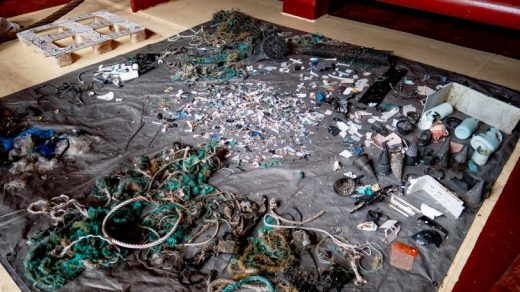The Ocean Cleanup device has returned from the Pacific Garbage Patch with its first load of plastic
After months of research, failures, and reconfigurations, and weeks spent at sea traveling to the Great Pacific Garbage Patch and back, The Ocean Cleanup’s device—a 2,000-foot long floating tube that skims the surface of the water to catch plastic trash—has returned to shore. And with it, it brought back 60 bags, sized one cubic meter, full of plastic trash, everything from fishing nets to plastic bags to microplastics one millimeter in size.
The end of the first voyage for The Ocean Cleanup, a Dutch nonprofit that hopes to rid the world of ocean plastic, is the end of a long journey for founder and CEO Boyan Slat, who first presented the concept of his device at a TEDx talk in 2012, and has spent the last seven years designing, funding, and deploying it. Now that it’s actually working—pulling debris from the giant vortex of trash that has collected in the Pacific ocean—the next step for the organization is turning that plastic into sustainable products, so you can own a piece of the Garbage Patch and help fund future missions.
“To make the clean up happen, it’s not just a technical challenge but also financial, because [with] international waters, there’s not an owner of the Garbage Patch that sees the value in cleaning it,” says Slat. “Basically it’s no one’s problem, but at the same time, we believe it’s everyone’s problem What we hope is that by making beautiful, sustainable products out of this catch, we can give an opportunity for everyone to be part of the solution and participate in the cleanup.” The idea is to turn this refuse into consumer products that won’t end up back in the ocean and then invest 100% of those proceeds into more cleanup missions.
It’s not yet clear what type of products The Ocean Cleanup hopes to make from its haul, but the nonprofit is already working with partners to create an infrastructure that can clean, sort, and recycle this plastic. They expect to be able to launch the first products in September 2020. If you’re eager to own an item made from ocean plastic, you can guarantee your place in line now with a $50 donation.
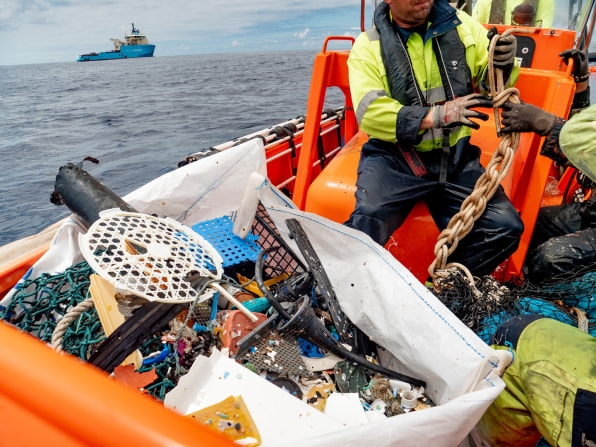
[Photo: The Ocean Cleanup]
Consumers have shown more interest in items made from recycled materials lately, and Slat thinks that products made with this ocean plastic could be somewhat of a novelty that garner even more appeal. “It’s not just plastic, it’s plastic with a story, like the difference between a normal rock and a piece of the moon,” he says. “Hopefully, eventually we’re successful, the Garbage Patch is history and will not be there anymore, and then there will still be these cool products that will remind us of it existing back in the day.”
That novelty could mean other companies jump on the bandwagon, labeling their products as made from ocean plastic even if they’re not. The Ocean Cleanup says its venture to make products with materials recovered from the Great Pacific Garbage Patch is the first of its kind, and to ensure that these materials are coming from the ocean it’s collaborating with a third-party certification specialist, DNV GL, to verify ocean plastic.
“There are already products that exist that are being labeled as ocean plastics, but there’s no real transparency in terms of where the plastic is coming from, how much of the plastic is actually coming from the ocean,” Slat says. “We believe it’s important that when people buy something made from plastic from the Garbage Patch, that they know for sure that that is actually the case.” Other companies and foundations can join this effort, as well, to certify that their own plastic is coming from the ocean, if they so choose.
The system that returned with the first Garbage Patch-captured plastic has been dubbed System 001/b, and The Ocean Cleanup has already begun preparing for System 002, a new full-scale, fully operational design. For this first voyage, crew members had to follow the device in a boat and empty the system of its caught plastic every few weeks. Slat hopes to extend that retention ability to months, because fewer trips back and forth with a boat means a more cost-effective cleanup process. “Our goal is to clean up 50% of the Garbage Patch in five years,” Slat says. “For that, we’re going to need a whole fleet of them, and the systems need to be bigger than the ones that we have trialed so far.”
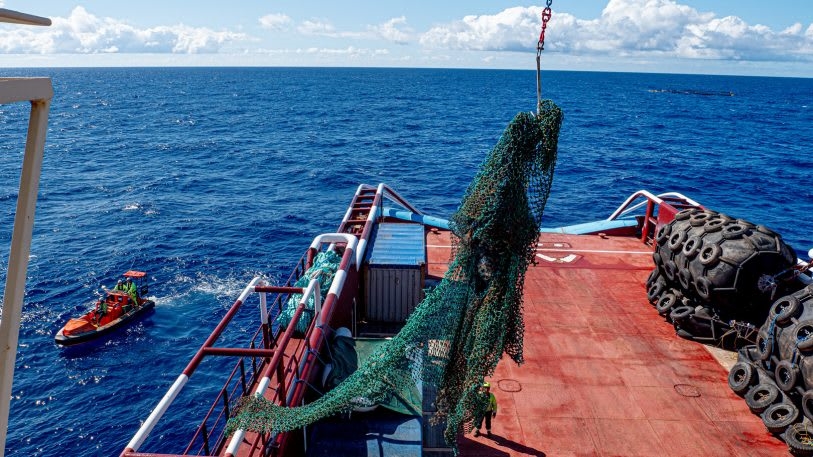
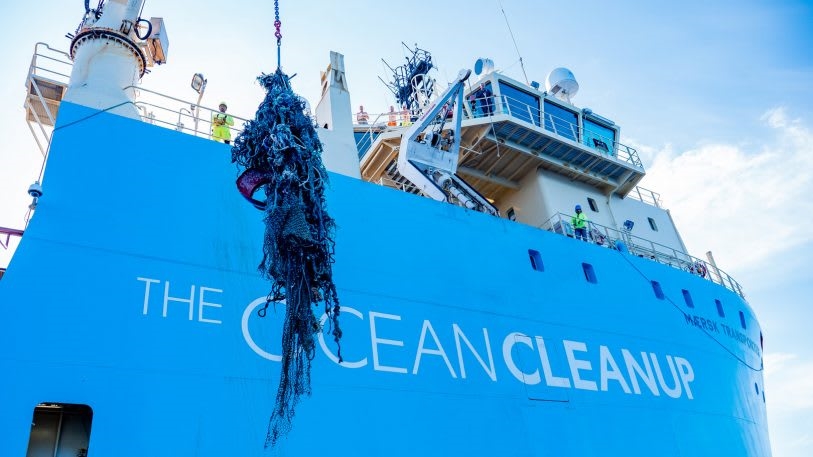
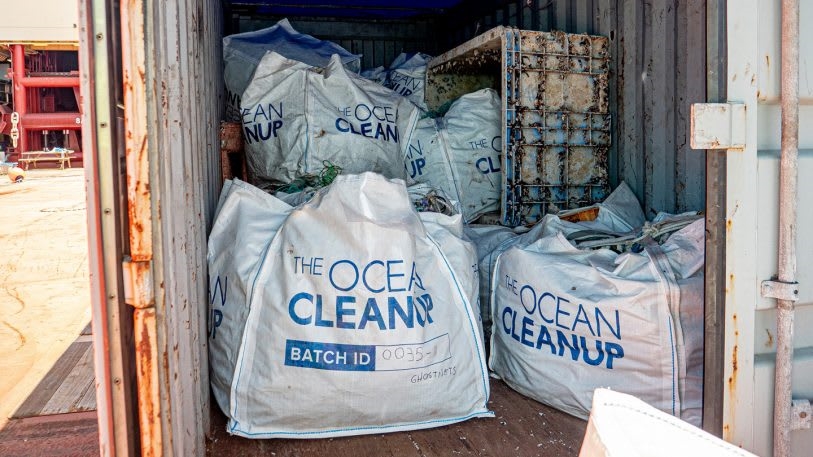
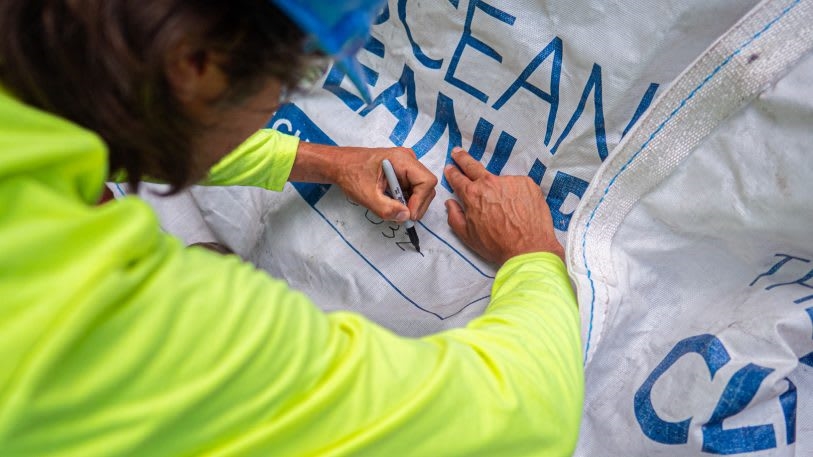
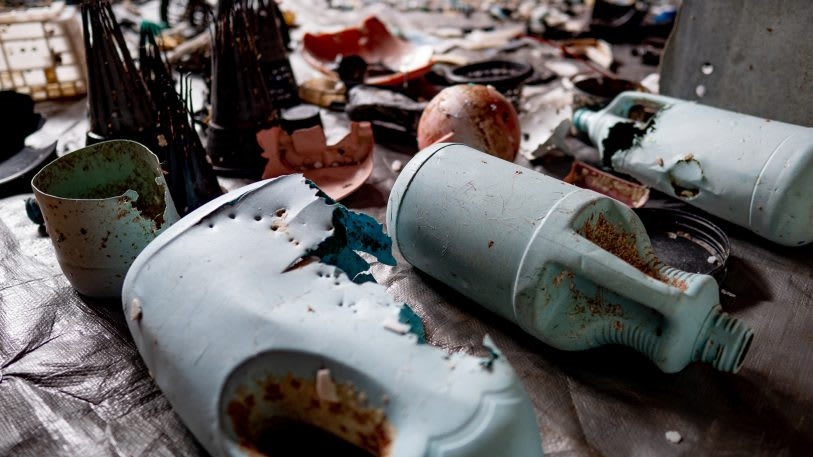
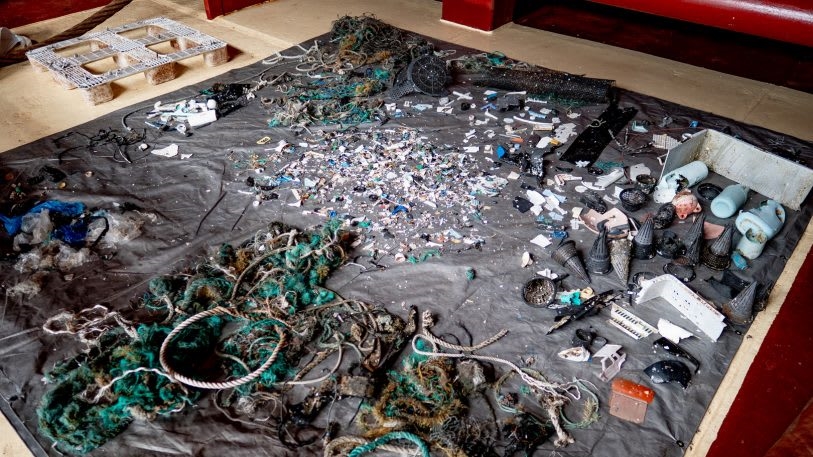
(24)

